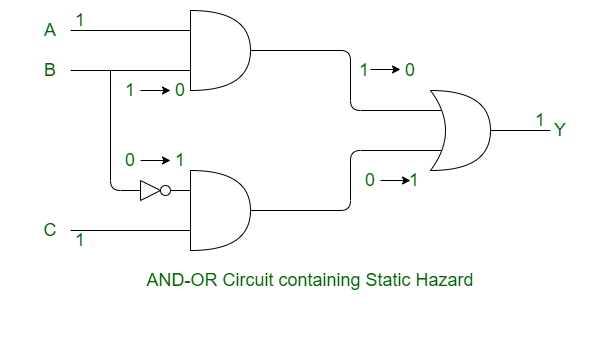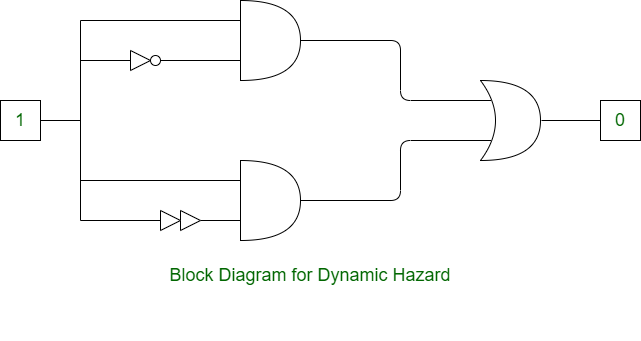1. 静电危害:
静态危害发生在组合电路中,可以通过使用冗余门来消除。静电危害进一步分类为:
1. Static-1 hazard
2. Static-0 hazard 
2. 动态危害:
当输出多次变化时,它应该只从 1 变为 0 或从 0 变为 1 一次,这称为动态危险。当两个相邻输入组合的输出在变化时发生变化时发生动态危险,输出应该只变化一次。但由于几条路径的延迟不同,它可能会在短时间内改变三次或更多次。动态危险只发生在多电平电路中。

静态和动态危害的区别:
| STATIC HAZARD | DYNAMIC HAZARD |
|---|---|
| Static hazard occur when an input changes and it causes the output to change at the same moment before output becomes stable. | Dynamic hazard occur when output changes for two adjacent inputs while the output should change only once. |
| Static hazard occur in combinational circuits. | Dynamic hazard occur only in multilevel circuits. |
| Static hazard is easy to resolve. | Dynamic hazard is complex to resolve. |
| It can be eliminated by using redundant gates. | Removal of static-1 hazard ensures no occurrence of dynamic hazard. |
| Static hazard is further classified as Static-1 and Static-0. | Dynamic hazard is not further classified. |
| It causes temporary false output value. | It results in a transition to a wrong stable state. |